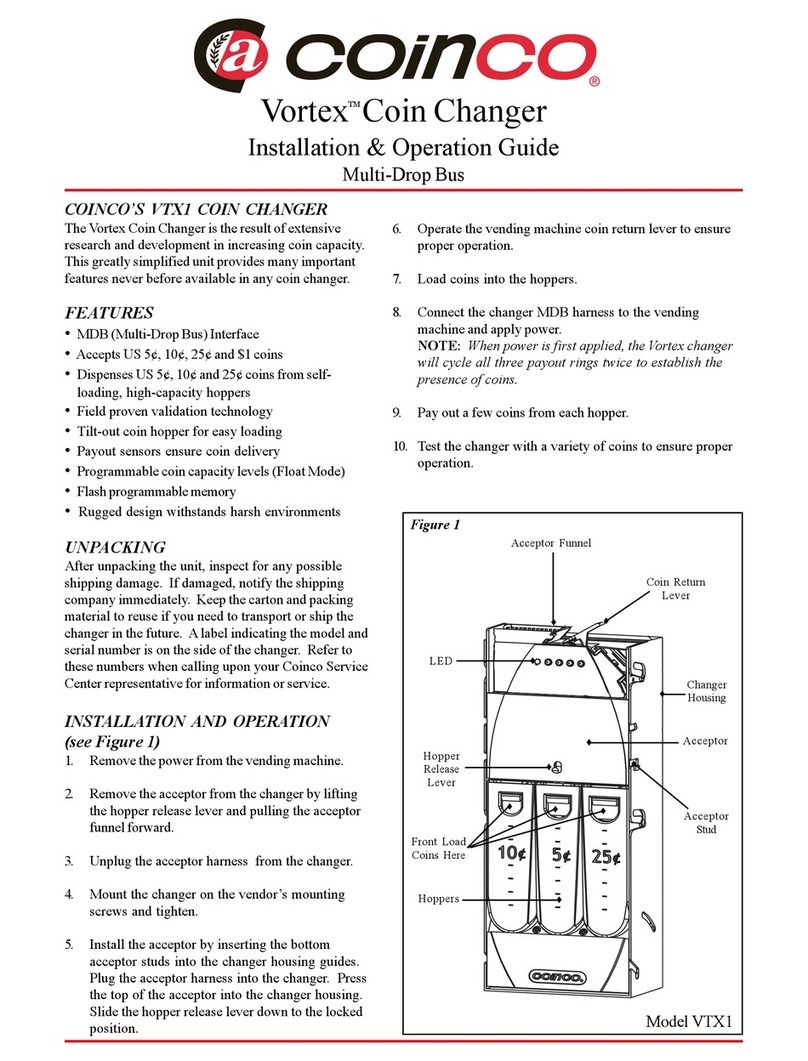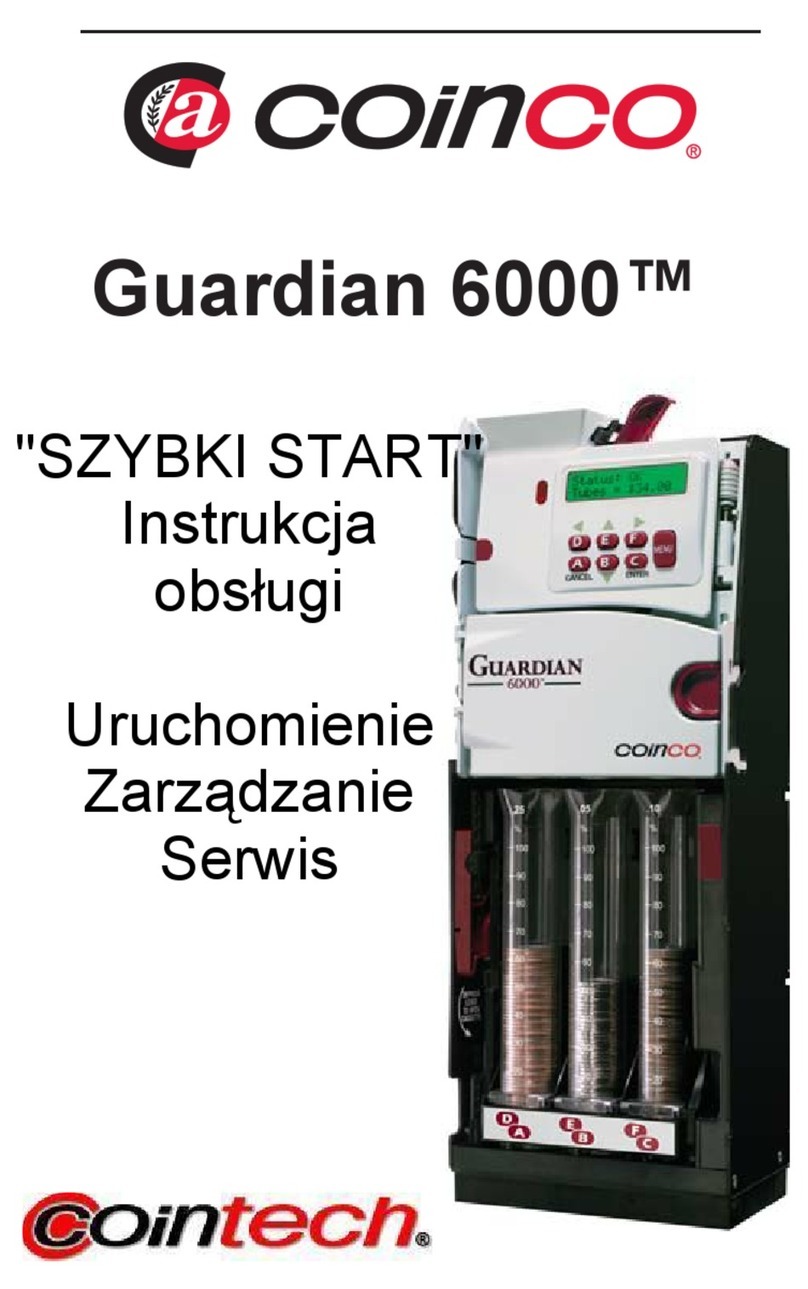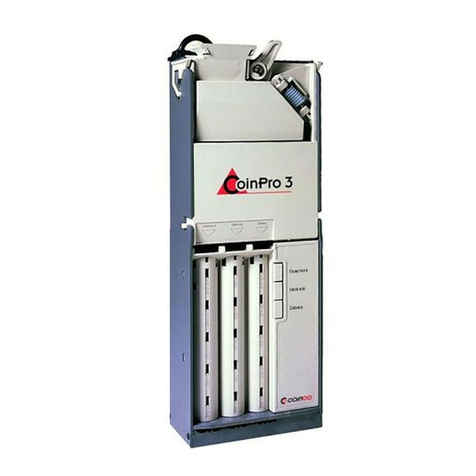©, MEI., 1996.v
CashFlow560 changegiver Applications Design Guide
Float Down Mode..............................................39
Resetting Tube Counts.....................................39
Price Teach ......................................................39
Homing the Dispensers ....................................40
Displaying Tube Value......................................40
INTERNAL DIAGNOSTICS & ERROR HANDLING ..........41
HOST MACHINE PROBLEMS ..................................41
Host Inhibited....................................................41
Removal of Blocker...........................................41
Blocker Return..................................................42
Cashbox Full.....................................................42
Bad Replies Received ......................................42
No Response....................................................43
COIN HANDLING PROBLEMS .................................43
Full Sensor Failure............................................43
Post Gate Strobe (PGS) Failure.......................43
Tube Cassette Removal...................................43
Home Sensor Failure........................................44
Motor Failure / Jam...........................................44
ON-BOARD EEPROM PROBLEMS..........................44
Incorrect Configuration vsn. No........................44
EEPROM Corruption ........................................45
Write Timeout ...................................................45
AUDIT FEM PROBLEMS...........................................46
Audit not initialised............................................46
Audit FEM corrupt.............................................46
Audit removed ..................................................46
HOST INTELLIGENT INTERFACE(HI2) ERRORS...46
HI2 Error...........................................................46
MISCELLANEOUS ERRORS....................................47
Acceptor Initialising Error..................................47
VIA MEIROUTE ALPHA 250 TERMINAL.......................48
KEY FUNCTIONS......................................................49
USING THE TERMINAL............................................50
VISUAL AUDIT..........................................................52
Visual Audit Interrogation..................................52
DIAGNOSING TERMINAL PROBLEMS ...................64
Testing the Terminal.........................................65





























